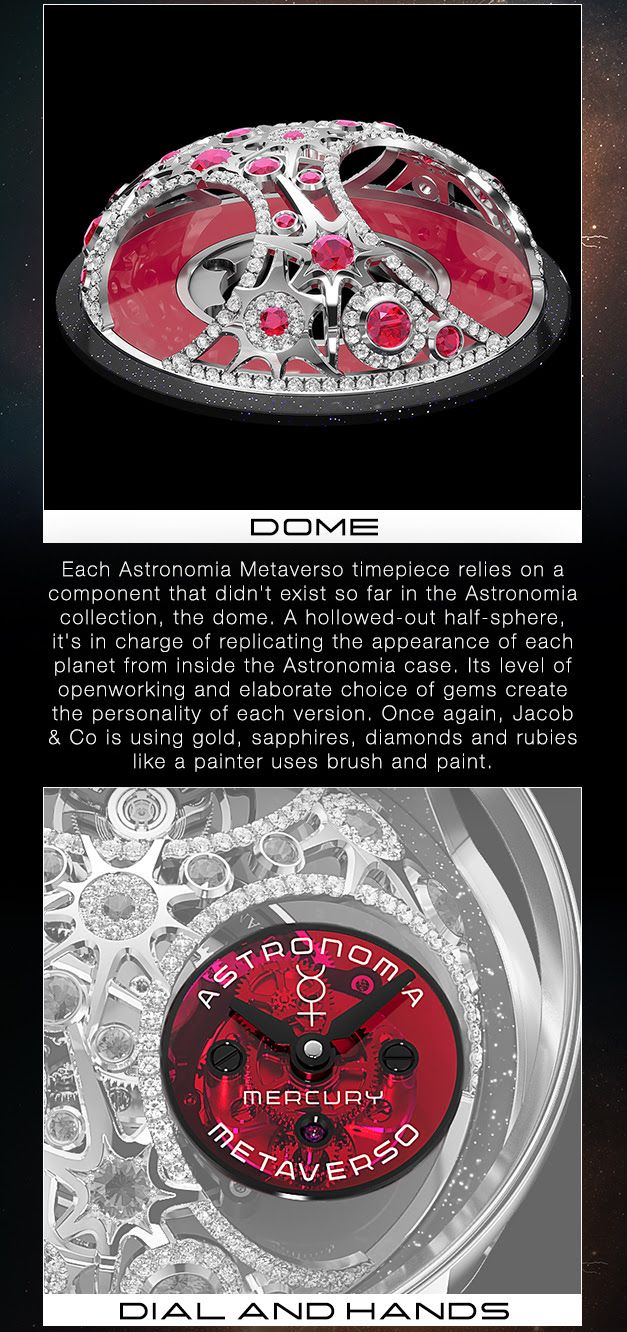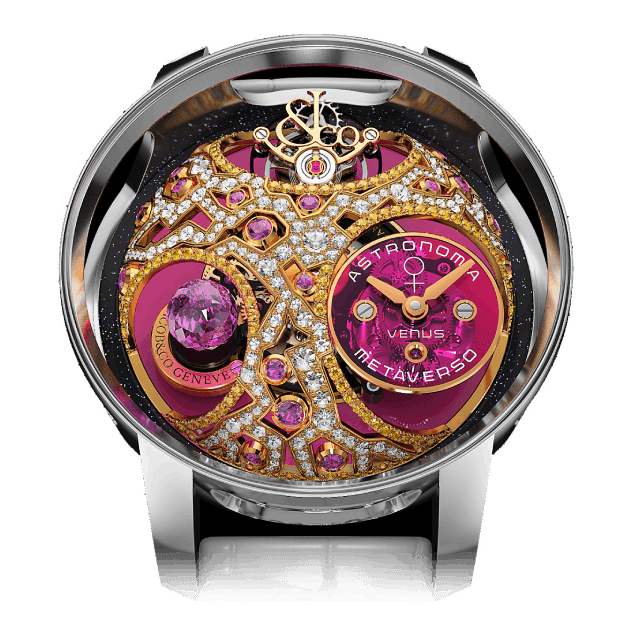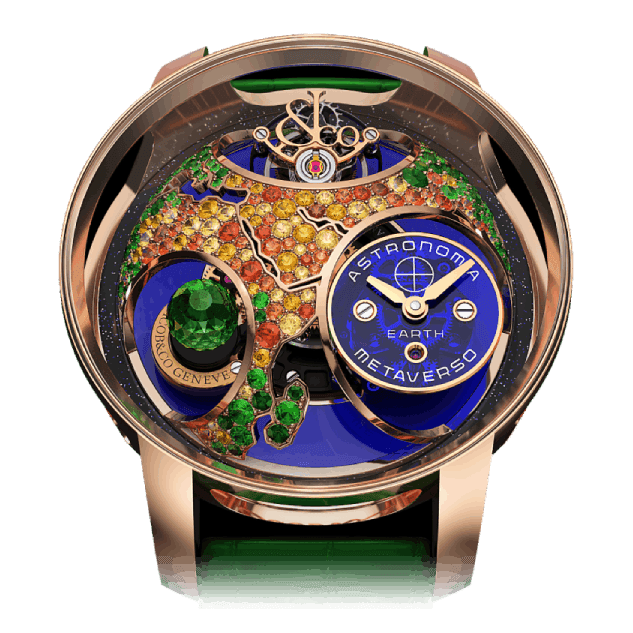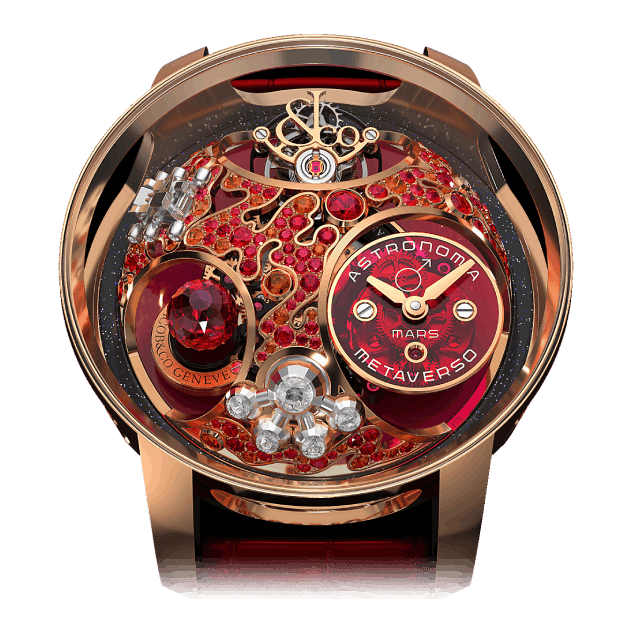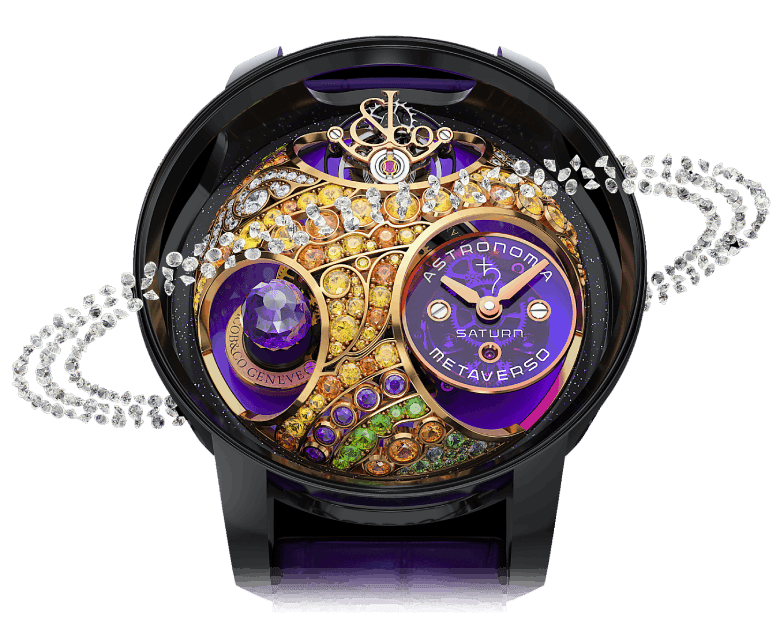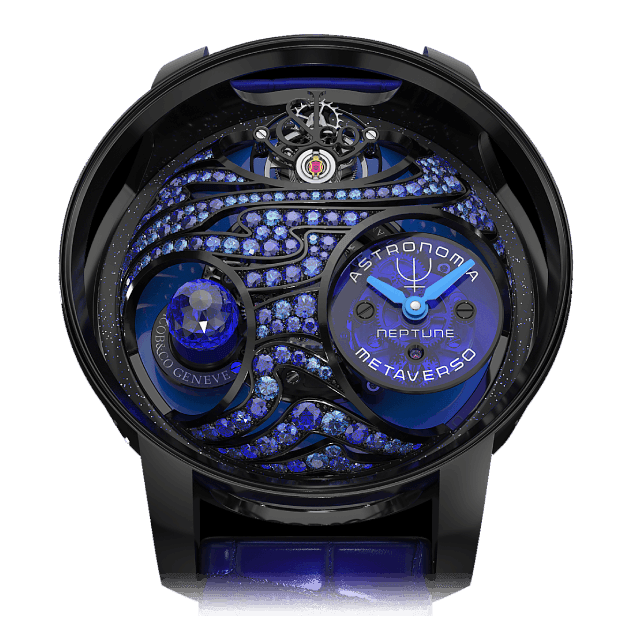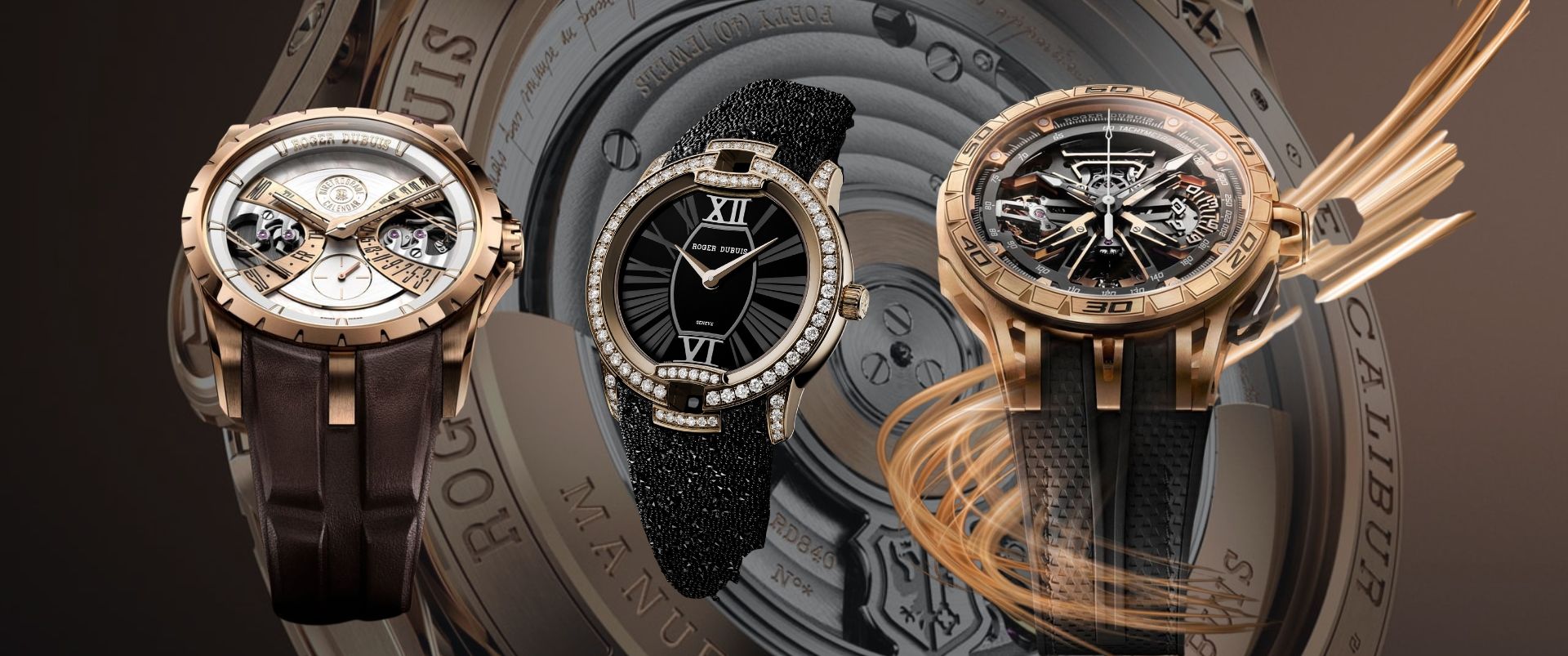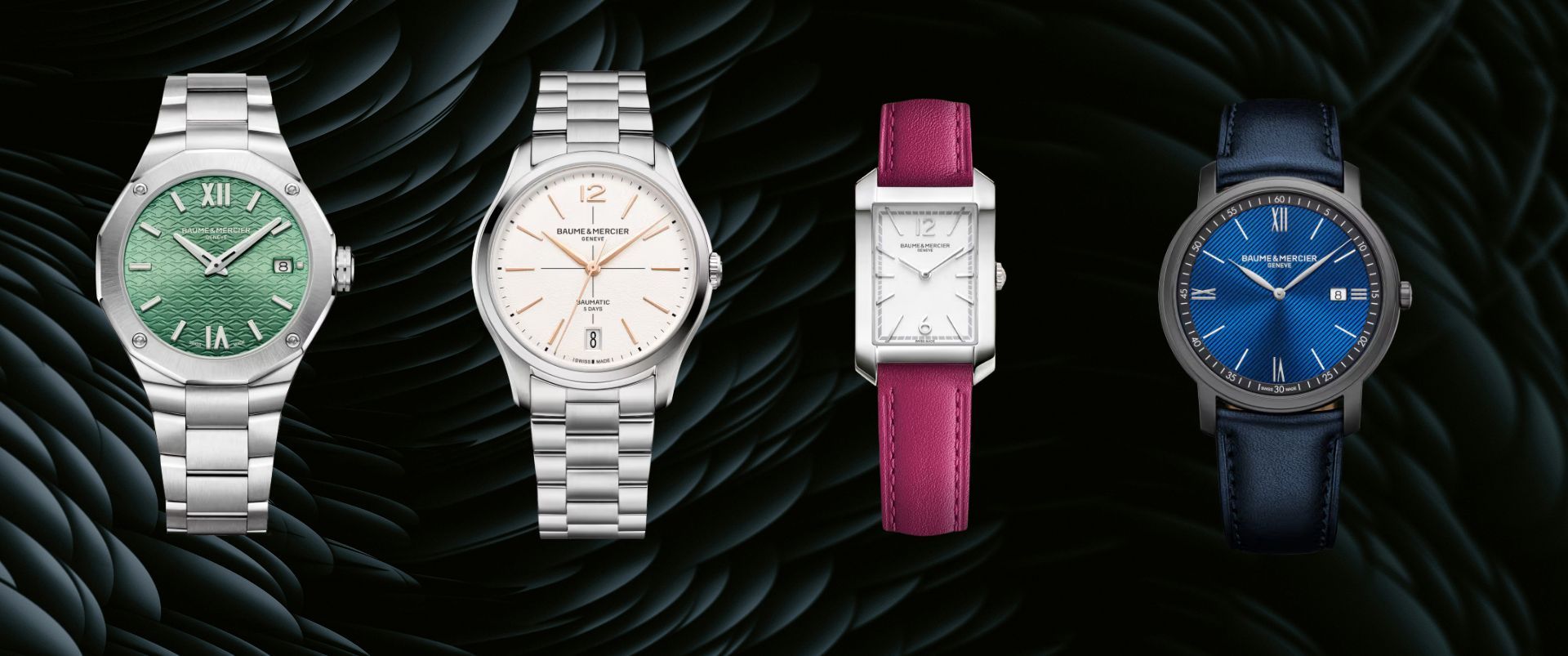Jacob & Co. : A Sneak Peak Into A Crypto-Native Future With The Astronomia Metaverso Collection
Jacob & Co. began 36 years ago with a single goal in mind: to be different. Every year since that vision has been realized. It takes a certain amount of bravery to stand out and forge your own path rather than following in the footsteps of others. That is the foundation upon which this company has been formed.
The Maison’s bold foray into the metaverse is Astronomia Metaverso. The collection is inspired by the company's legendary Astronomia line, but it's updated for a digital, crypto-native future. The Astronomia Metaverso collection includes eight different watches that have been converted into NFTs. Each NFT returns from the metaverse with a unique set of abilities. A digital NFT artwork inspired by a metaversal rendition of planets from our solar system is used to represent each watch.
Each NFT serves as an exclusive membership permit that grants access to physical, digital, and experiential benefits. The physical form of the watch is coupled with the watches from the five closest planets (Mercury, Venus, Earth, Mars, and Jupiter), whereas the three most distant planets (Saturn, Uranus, and Neptune) have fractured into various digital-only varieties.
All of the timepieces are designed in partnership with the NFT marketplace UNXD and feature colour-matched jewels that reflect the external appearance of each planet.
The watches have a 44mm case and a base dial with an aventurine outer dial in the colors of the planets. The physical examples will have a flying tourbillion and be powered by the watchmaker's manual winding JCAM19 movement. The case of each model differs as well, from 18-karat white gold and sapphire for the Uranus model to a mystery black DLC Titanium and Sapphire combo for the Neptune and Saturn figures.
To be certain, there's plenty of bling in this collection. The domed watches feature brilliant-cut white diamonds, as well as dazzling pink and yellow sapphires, green tsavorites, red rubies, and icy blue sapphires, all of which are meant to highlight the fire, ice, and storm components found on each planet.
Let’s get into the details…
MERCURY
Mercury shows its splendour through its scars. Hundreds of weathered craters carve the surface in a similar way to our own moon, with the most recent meteoric strikes retaining their stunning starburst patterns. Mercury is in a dual condition of fire and ice at its closest approach to the sun. The sunlight side may achieve temperatures of about 800°F, while the shadow side can reach temperatures of -300°F. Mercury, while being the smallest of the eight planets, offers a bright message of defiance in the face of fire.VENUS
Venus is a real femme fatale who is both beautiful and deadly.
Across her golden surface, which is veiled in a crushing atmosphere, distinct lightning-shaped patterns ripple. With temperatures exceeding a scorching 900°F, this diva of a planet has held the title of Hottest-in-the-Solar-System for many years. She is grace and beauty, but she will also melt your heart.
EARTH
Earth is our home, a unique sanctuary in the unfathomable vastness of space. Borders, politics, and people groupings drop away when viewed from above, and we see our globe plainly as a living and complicated creature. Earth is teeming with life, from its deserts to its forests. The Astronomia Metaverso Earth is a lovely reminder of the priceless gem we live in, as well as a reminder to protect the life we all share here.MARS
The future is on Mars. Just as there was a worldwide passion in the 1960s to put a man on the moon, our objectives have now shifted to the red planet, Mars. Mars, which is currently only occupied by our rovers and satellites, may soon welcome humans for the first time in history. Mars gleams with possibility, offering a satisfying challenge worth pursuing.JUPITER
Jupiter is the planet that reigns supreme. In contrasting bands of flaming red, orange, and bright white, its intricate clouds whisk across the stormy surface. Fantastic displays of strong storms are always building, with Jupiter's Great Red Spot being the most famous of them all. Jupiter is also known as the Great Shepherd Planet because its tremendous gravitational pull captures and herds hundreds of asteroids, preventing them from approaching Earth.SATURN
The deity of time is Saturn. Its brilliant icy rings have dazzled generations of people since Galileo first discovered them in 1610. During Saturn's spring, when it tilts toward the sun, a white whirlwind storm erupts in the northern half of the planet. Many various slightly crafted bands liven up the pale gold atmosphere.URANUS
Uranus is a realm of frosty blue that is very unique. This ice giant rolls to the beat of a separate drum as it rotates on its side in relation to the other planets. The icy clouds are a delicate blue hue, fitting for the Greek god of the sky.Uranus' rings are thinner and more brilliant than Saturn's, and they shine out due to the planet's peculiar sideways orientation. It's sometimes best to just be yourself, regardless of what others are up to.
NEPTUNE
Neptune, like a deep blue ocean, flows freely away from the sun. With winds reaching 1500 miles per hour, its sapphire-colored clouds dart through the Neptunian atmosphere. The arrival of light from our sun takes over 4 hours, making Neptune's dominion gloomy and frigid. Neptune's presence was predicted with mathematics in 1846, despite its astronomical distance and inability to be seen with the naked eye.NFT purchasers will gain access to exclusive bonuses, as well as invitation-only events and other special releases from the watchmaker. A private tour of Jacob & Co.'s production plant in Geneva and an invitation to dine with the brand's creator Jacob Arabo will be among the unique experiences offered by the NFTs combined with tangible samples. Even better, you'll be able to help design the watchmaker's next line of NFT-inspired timepieces, which will debut in 2023.
No articles found



